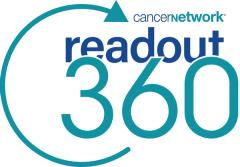
Risk Scoring Systems for Metastatic RCC
Considerations regarding the value of using the IMDC (International Metastatic Renal Cell Carcinoma Database Consortium) criteria to risk-stratify patients with metastatic renal cell carcinoma as novel therapies become more widely used.
Episodes in this series

Toni Choueiri, MD: Many people are saying they want to get rid of the IMDC [International Metastatic Renal Cell Carcinoma Database Consortium] risk groups…I get a lot of comments that they are a relic. They will say they want to do biomarkers, they want to sound smarter than they are. That is fine too, but there is no doubt that the IMDC and the MSKCC [Memorial Sloan Kettering Cancer Center risk stratification model] and all of these risk groups, do capture the natural biology of metastatic RCC [renal cell carcinoma]. We started to know why now for a few years because we are integrating DNA and RNA and the protein markers. We are seeing that the good-risk patients have more of an angiogenic signature. The poor-risk patients have an aggressive biology dictated by EMT [epithelial-mesenchymal transition], and may also have some infiltrated immune signals.
In probably less than 5 seconds, you could still guess the natural biology of this disease. They [the risk criteria] are important today, they remain important, and they should be used. Now, in the future, once we combine these drugs and we have more options and more CRs [complete remissions], perhaps there are not any more options with IMDC and it shouldn’t be used, except to de-escalate. We’ve already seen signals of this. If you look at the IMDC favorable risk, the OS [overall survival] benefit, not the PFS [progression-free survival], nor the response rate, the hazard ratio crosses 1 with most of these studies, or close to 1. It could mean that maybe for survival, if that’s what you are thinking about always, you don’t need 2 drugs, you need 1 drug. But which drug? I can’t tell you.
Do you need the TKI [tyrosine kinase inhibitor], or do you need the PD-1? There are more data with the TKI. On the other hand, with favorable risk, there aren’t studies that are powered enough for favorable risk only. These patients have more of an indolent course. So it’s possible that this hazard ratio close to 1 for OS is simply because we don’t have a thousand patients with favorable risk who are having enough events. That is also a possibility, which makes them [risk criteria] even more relevant today. But hopefully, tomorrow when we have 3, 4, or 5 drugs in the right patient, knowing we have to be very careful with the toxicity. But if we are achieving a CR suddenly of 50% or 60%, irrespective of the IMDC risk group, then you know we can say goodbye to them.
Transcript edited for clarity.
Newsletter
Stay up to date on recent advances in the multidisciplinary approach to cancer.


















































































